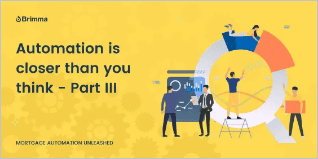September 8, 2022 | 3 min read
The Cost of Poor Program Management

Mario DiBenedetto
Managing Director

As humans, we can only focus on one thing at a time. Given that, when you choose to do one thing, it means you are doing that one thing to the detriment of all other things you might do.
One of my pet peeves is leaders who throw work at their team with no recognition of the juggling act required to fit it into the ever-growing To Do list everyone is trying to manage. At the same time, if leadership truly needs something to go to the top of the priority list, there should be a way to make sure everyone gets inline with the change.
KEY POINT: You are losing time every day to poor program management because priorities are not clear.
If you are in mortgage lending (or any number of other industries that are currently shrinking), the chances are high that your organization is currently downsizing or has already significantly downsized. This is a necessary reaction to the industry’s shrinkage due to the drying-up of refinances. If you manage a team, what you are probably facing, as a result, is a long list of in-flight projects that require way more resources than are available to complete them.
Simple First Step
If you don’t even have a master list of projects that are in-flight, don’t feel bad as this is common. That said, to cite one of my favorites quotes from Watts Humphrey: “If you don’t know where you are, a map won’t help”. So get everything into one of the many systems that allow you to manage tasks, like ServiceNow, Monday.com, ClickUp, etc.
Second Step: Set Clear Priorities
If you do nothing to set the focus for your team, they will either decide what they think the priorities should be or they will hedge their bet and assume that all of their projects are equally important to you.
Don’t get me wrong, you hired smart people so that they could make decisions on your behalf about things like project priorities. But a lack of consensus on priorities is almost guaranteed to result in frustration when you don’t get what you were expecting when you were expecting it.
And we know that every person approaches their workload differently. Some people only want to focus on the things they think will help them advance their career. Others want to feel progress by knocking-off the easiest tasks on their list. Neither of which has much to do with what you know is most impactful.
Now consider for a moment how many phone calls, meetings, and emails your team is dealing with for each project that is not at the top of your list. This is the overriding theme...if you do nothing, your team will spend time in meetings, send and receive countless emails and IMs, all to the detriment of the things you really value.
Given the ridiculous volume of distractions that employees typically experience, actively reducing workload and, as a result, distractions, for your team will have the single biggest impact on their productivity.
Similarly, consider the leadership this demonstrates by making it clear that you value “productivity” not “activity”. In our Zoom-ridden world, it's become too easy to become a professional meeting attendee. That is, someone who is scheduled into meeting after meeting with rarely a need to contribute. You can empower your employees to extricate themselves from meetings that are not relevant, but that is not a way to holistically solve the issue.
Third Step: Strengthen Your Program Management Team
Your program management team is at the heart of your meeting cadence. Meeting cadences are central to how/when your team communicates. Make sure your program management team is driving consistency in:
- Meeting attendee lists being limited to those that truly need to attend
- Meetings have predefined agendas and when the agenda is exhausted, the meeting ends. Side topics that do not require all attendees are dealt with on ad hoc calls.
- Meetings producing effective minutes and action items such that those who do not attend can still stay informed
- Manage risks, action items, and issues in tools other than email and instant messengers



